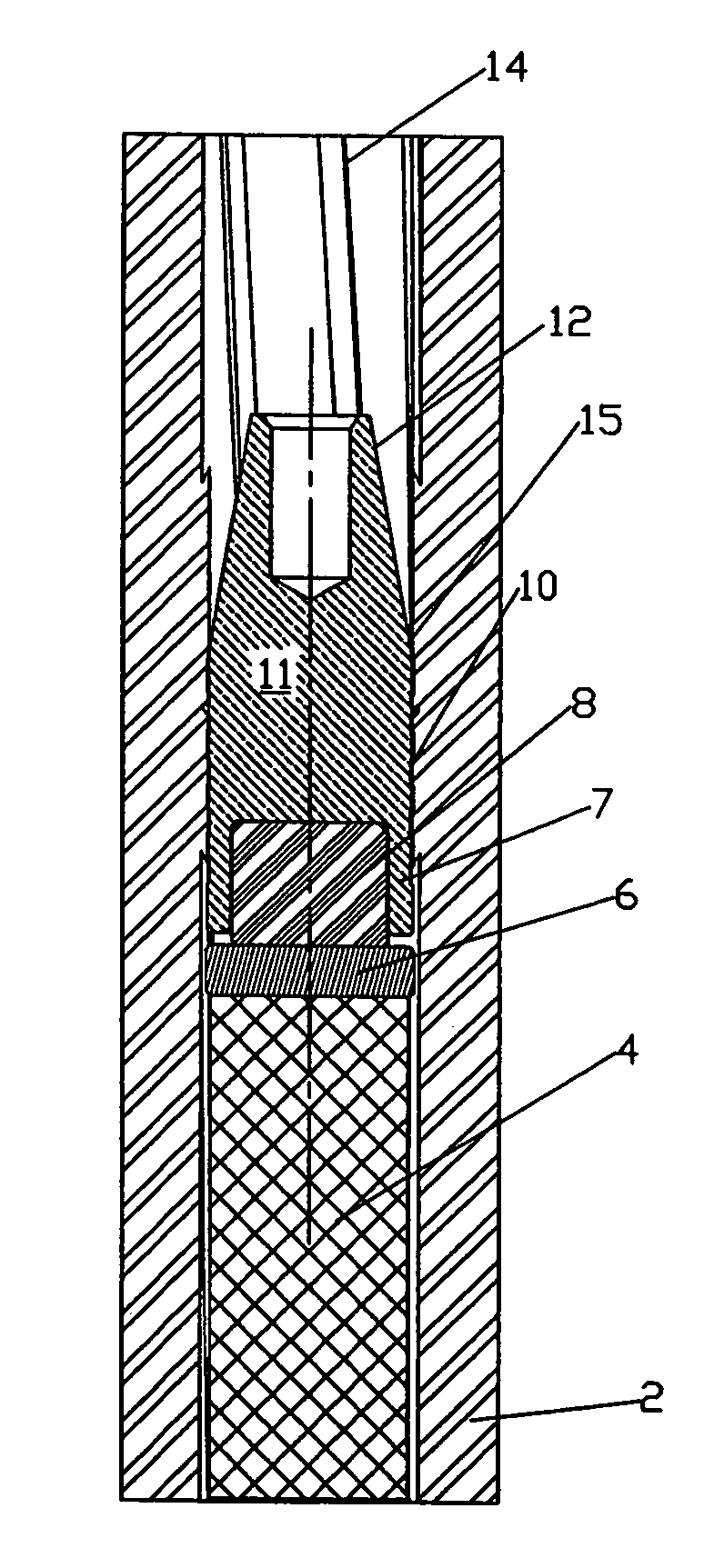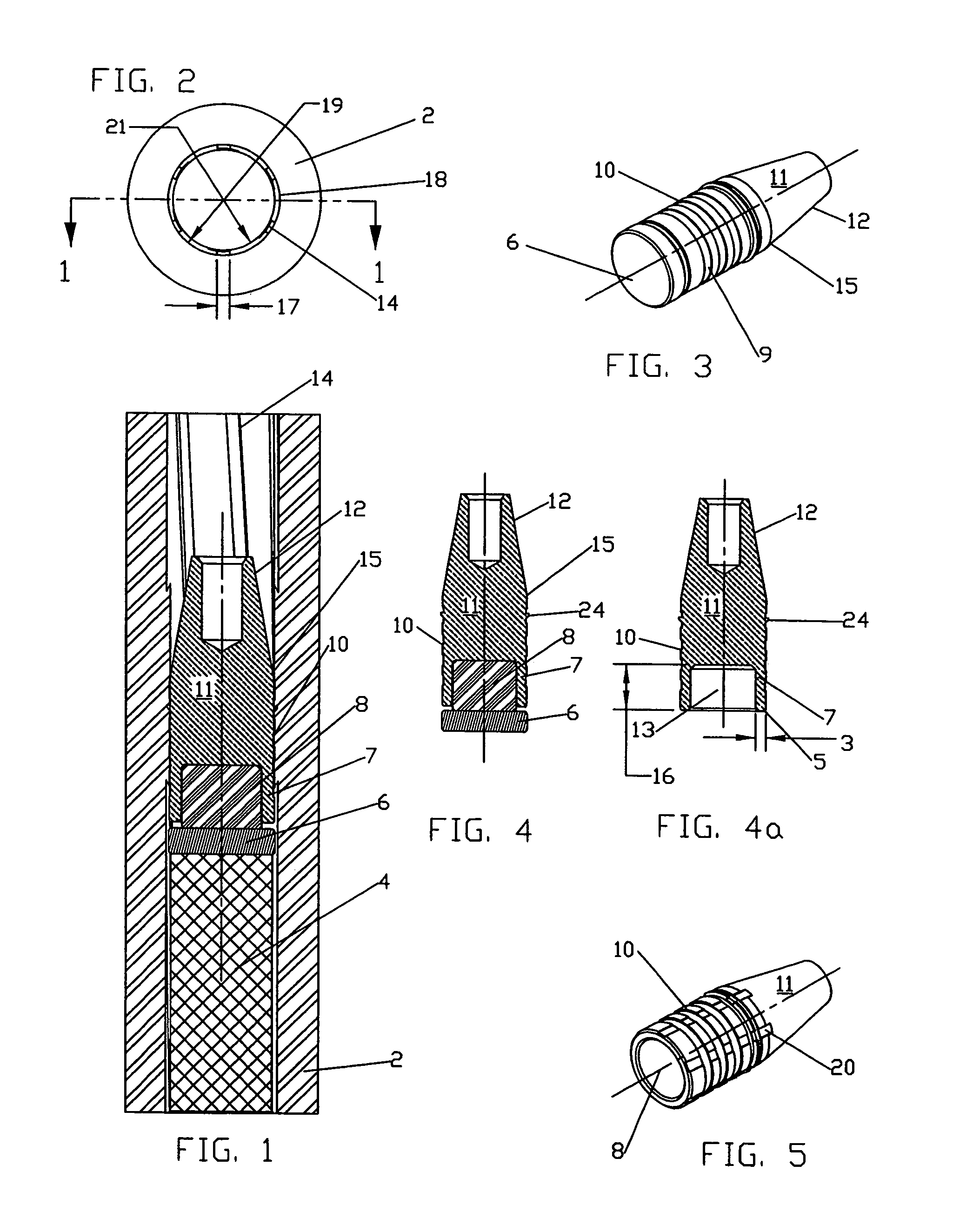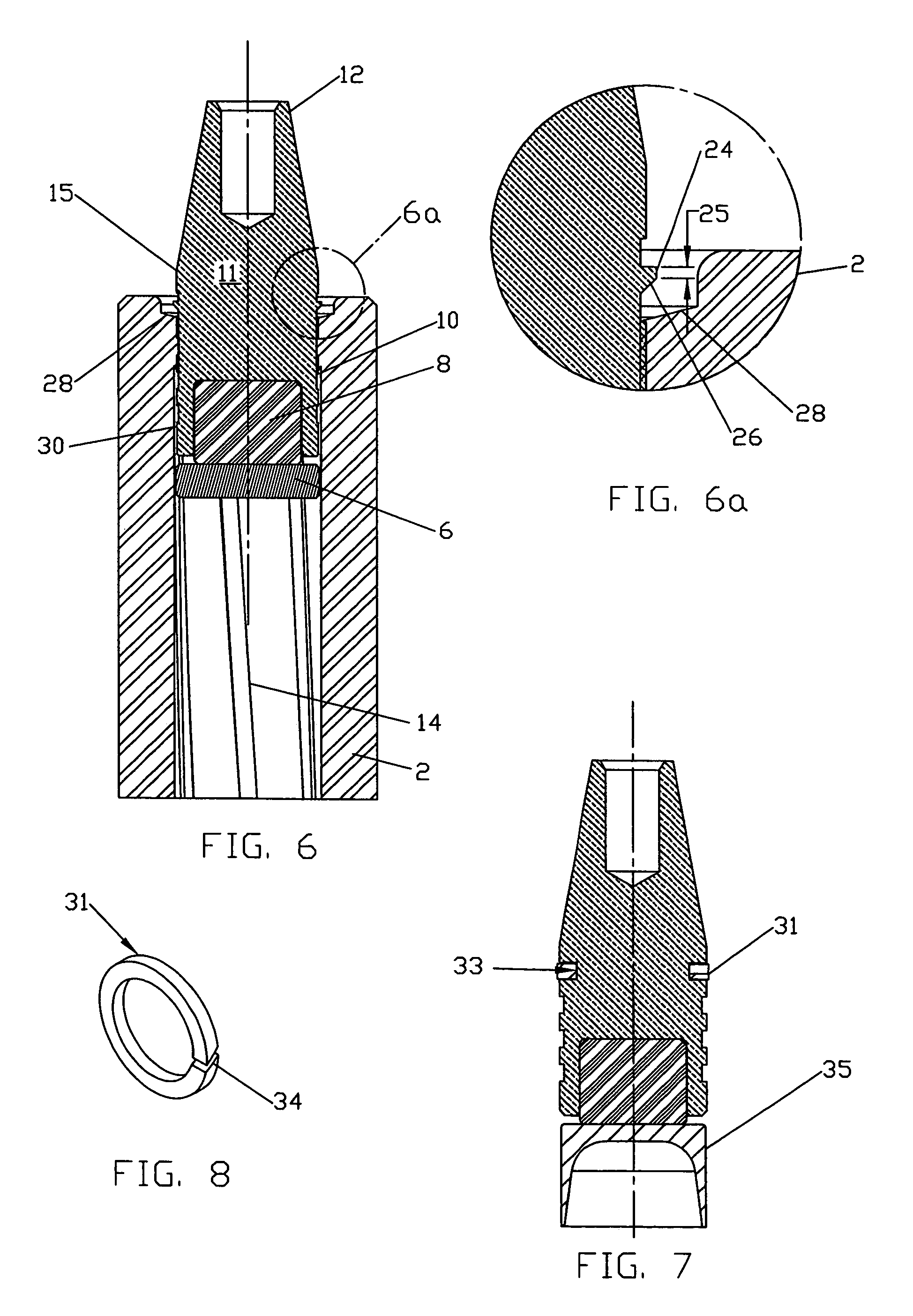Muzzleloading firearm projectile
a projectile and firearm technology, applied in the field of muzzleloading firearm projectiles, can solve problems such as creating interference between the bore of the barrel, and achieve the effect of reasonable alignment of the shank of the bullet and easy loading
- Summary
- Abstract
- Description
- Claims
- Application Information
AI Technical Summary
Benefits of technology
Problems solved by technology
Method used
Image
Examples
Embodiment Construction
[0026]Referring now to the drawings, there is shown in FIG. 1 a loaded breach assembly composed of a rifled firearm barrel 2, a projectile 15 of this invention, a gas check member 6, and a powder charge 4. The caliber of the firearm barrel 2 may be any one of a number of those popular with the muzzle loading firearm industry. The bore of the barrel is rifled with a series of equally spaced raised spiral grooves 14 and lands 18 that transcend the length of the barrel. The bore diameter is defined as the minor diameter of the rifling grooves 14, is shown in FIG. 2 as number 21. The groove diameter is defined by the rifling lands 18 is defined as number 19. The differential between the rifling bore diameter 21 and the groove diameter 19 is typically between 0.005 and 0.012 inches. The purpose of the rifling is to impart rotary motion to the projectile as it is propelled down the length of the barrel 2 by the propellant gases created from igniting the powder charge 4 creating gyroscopic...
PUM
 Login to View More
Login to View More Abstract
Description
Claims
Application Information
 Login to View More
Login to View More - R&D
- Intellectual Property
- Life Sciences
- Materials
- Tech Scout
- Unparalleled Data Quality
- Higher Quality Content
- 60% Fewer Hallucinations
Browse by: Latest US Patents, China's latest patents, Technical Efficacy Thesaurus, Application Domain, Technology Topic, Popular Technical Reports.
© 2025 PatSnap. All rights reserved.Legal|Privacy policy|Modern Slavery Act Transparency Statement|Sitemap|About US| Contact US: help@patsnap.com



